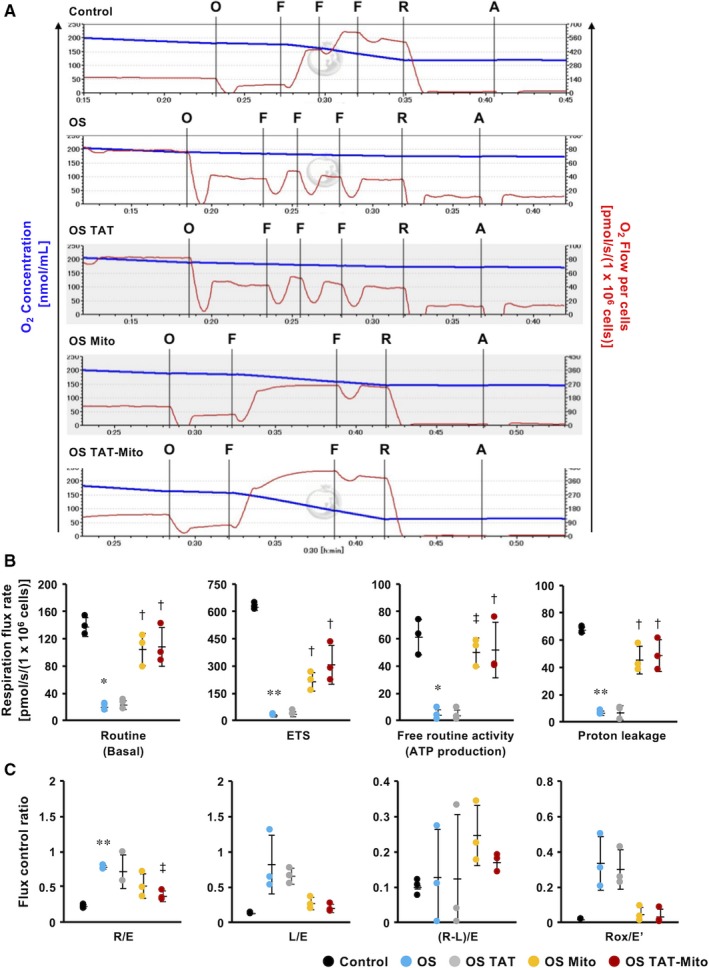Figure 6.

Mitochondrial transfer might rescue mitochondrial function in NRCMs after in vitro OS induction. (Recipient cells, NRCMs; Mitochondrial donor cells, H9c2 cells). A, Coupling control protocol test of NRCMs after in vitro OS induction, showing continuous traces of O2 concentration (blue line) and O2 consumption (red line). O; Oligomycin (inhibitor of ATP synthase) 2 µg/mL, F; FCCP (potent uncoupler of oxidative phosphorylation in mitochondria) 0.5 µmol/L, R; Rotenone (inhibitor of mitochondrial respiratory complex I) 0.5 µmol/L, A; Antimycin A (inhibitor of mitochondrial respiration) 2.5 µmol/L. B, Rate of respiration flux during each condition. Routine indicates basal mitochondrial O2 consumption under endogenous cellular conditions. The electron transport system (ETS) indicates the maximum respiratory capacity of the ETS under each cellular condition. Free routine activity represents the ability of mitochondria to produce ATP via oxidative phosphorylation (OXPHOS). C, Flux control ratio during each condition. R/E; the ratio of routine respiration and ETS capacity. L/E; the ratio of leaked respiration and ETS capacity. (R‐L)/E; phosphorylation‐related respiration (corrected for leaked respiration) as a fraction of ETS capacity. Error bars indicate SE (n = 3). * and ** indicate significant changes compared to control (P < .05 and P < .01, respectively). † and ‡ indicate significant changes compared to OS group (P < .05 and P < .01, respectively)
